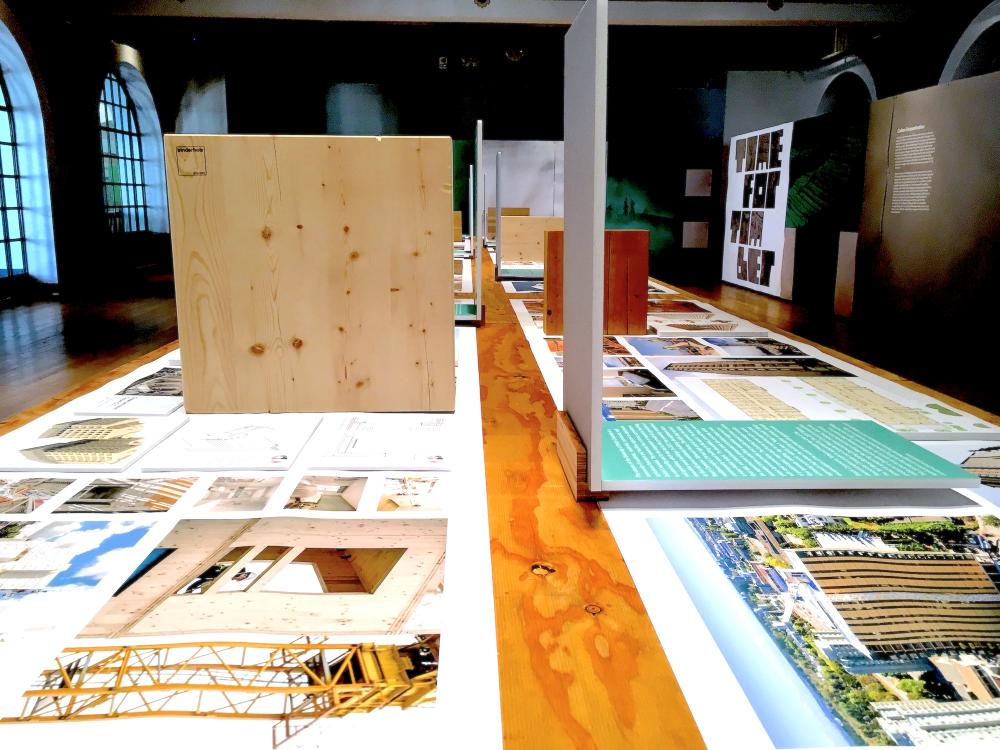
"The 17th century was the age of stone. The 18th century was the peak of brick. The 19th century was the era of iron. The 20th century was the century of concrete. The 21st century will be the time for timber."
- Alex de Rijke, dRMM
Our society is currently faced with two significant challenges: human-made climate change and the need to provide housing for an ever-increasing world population. Since the Industrial Revolution, we have relied on steel and concrete as the primary building materials for the construction of our cities. Their refinement and processing require large amounts of energy, which is mostly generated by the burning of fossil fuels. As a result, carbon that has been stored for millions of years has been released into the earth’s atmosphere within a relatively short period of about 150 years in the form of carbon dioxide, contributing significantly to the climate shift we are experiencing today. The manufacture of cement, the key ingredient of concrete constitutes one of the most polluting processes in today’s construction industry. To provide sufficient housing for future generations, while at the same time lessening the impact on our environment, we must rethink the way we build.
Wood is a truly renewable building material that is unlimited in supply if its growth and harvest are sustainably managed. Trees store carbon through photosynthesis as they grow, simultaneously releasing oxygen. When wood decays or burns, it only releases as much carbon dioxide into the atmosphere as has been bound during its growth, therefore completing a carbon neutral life cycle. The latest innovations in engineering allow for the use of timber in the construction of multi-story and long-span structures. By replacing steel and concrete with timber, our buildings and cities can become carbon sinks rather than becoming sources for CO2 emissions.
This symposium argues for the increased use of wood as an alternative to more fossil-fuel intensive building materials by bringing together speakers from various backgrounds for multidisciplinary discussions and an exchange of ideas. It will touch upon current issues in forestry, ecology, wood products manufacturing, construction systems, craft, and human perception with the goal of demonstrating that an integrated approach can have the potential for positive impact on the environment, local economies, and the building culture at large.
Exhibition: January 24 – February 28, 2018
The invited exhibit presents six innovative mass-timber structures in North America and Europe that have been recently completed or are currently under construction.
Symposium: Friday, February 16, 2018
Lectures: 1:00 – 5:00pm, Moderated Panel Discussion: 5:30–6:30pm
The one-day symposium brings together invited panelists from various professional backgrounds to present their work and engage in a dialogue about designing and building with wood.
Speakers
Michelle Addington | Dean and Henry M. Rockwell Chair in Architecture
The University of Texas at Austin School of Architecture, USA
Grace Jeffers | Designer, Writer, Historian
New York City, New York, USA
Jan-Peter Koppitz | Engineer
Arup, San Francisco, California, USA
Andrew Waugh | Architect
Waugh Thistleton Architects, London, United Kingdom
The Time for Timber symposium and exhibition are organized by Ulrich Dangel, Meadows Foundation Centennial Fellow in Architecture, and sponsored by the Center for American Architecture and Design at The University of Texas at Austin School of Architecture.
For more information, contact Leora Visotzky: leora@austin.utexas.edu

